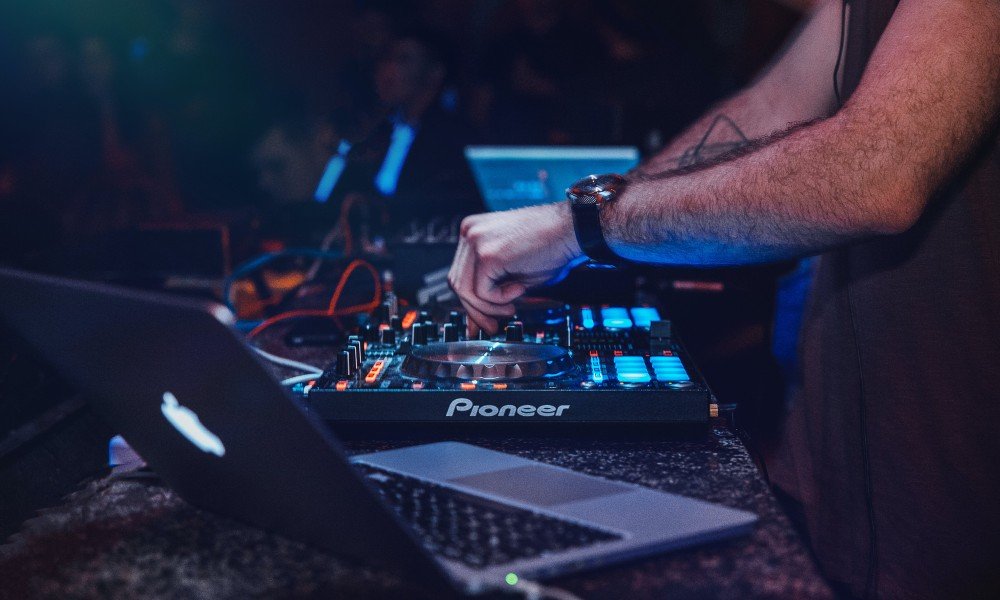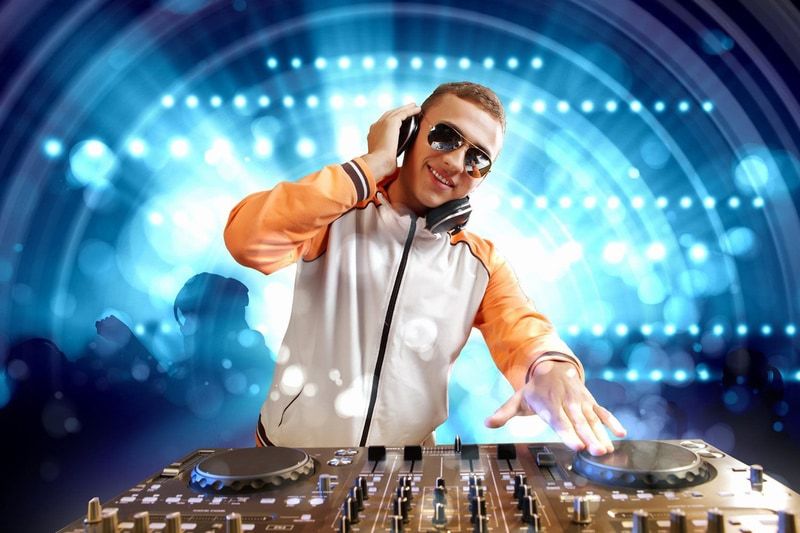When you attend a live performance by a DJ, the energy, the beats, and the crowd’s excitement all come together to create an unforgettable experience. But behind the scenes, there’s a skilled professional orchestrating everything from the sound to the vibe. A DJ isn’t just pressing play on a playlist – they are curating an auditory experience that drives the night forward, creating seamless transitions, and keeping the crowd dancing. But what exactly does a DJ do during a live performance? In this article, we will dive into the different roles and responsibilities that a DJ takes on when performing live.
The Role of a DJ in Live Performances
At its core, a DJ’s role is to entertain, elevate the atmosphere, and connect with the crowd through music. Whether they’re playing at a nightclub, a festival, or a private event, the primary goal remains the same – to create an environment where people can lose themselves in the rhythm. The question of “what does a DJ do” in live performances can be answered by understanding the layers of their responsibilities.
A DJ is not just a music player; they are the curator, the storyteller, and the mood maker. The performance starts before the first track is even selected, and it continues until the last beat fades out. To get a full picture of what a DJ does during live performances, let’s break it down into a few key stages.
Preparing for the Performance: The Art of Curation
Before stepping onto the stage, a DJ spends a significant amount of time curating their playlist. Unlike a live band that rehearses its songs, a DJ’s preparation involves selecting tracks, remixes, and edits that fit the event’s vibe. This phase involves deep knowledge of music genres, crowd preferences, and the event’s theme.
A DJ often spends hours choosing the right mix of songs, adjusting tempos, ensuring smooth transitions, and understanding the crowd dynamics. They create playlists that offer variety, taking into account the energy and flow they want to create throughout the performance. A DJ also has to be prepared for unexpected moments; they need to have a backup set of tracks for any changes in mood or energy.
The preparation phase goes beyond music selection. DJs must also ensure that their equipment is ready to handle the performance. This includes setting up turntables, controllers, sound systems, and ensuring that all connections work flawlessly.
The Mixing: Crafting the Seamless Sound
When the event begins, a DJ’s primary role is mixing. This is the heart of what a DJ does during a live performance. Mixing involves blending multiple tracks together in a seamless manner. This process requires a deep understanding of music theory, including tempo (beats per minute or BPM), key, and rhythm. A DJ uses their turntables, controllers, or software to manipulate tracks, adjusting tempo and effects to make sure the transition between songs is smooth and natural.
A big part of mixing is beatmatching – the art of synchronizing the beats of two tracks so they play in unison. When done correctly, it creates a continuous flow of music that keeps the crowd engaged. But mixing isn’t just about matching beats; it’s also about understanding energy and mood. A DJ must read the crowd and decide when to drop the next track based on the atmosphere in the room.
In live performances, DJs also use techniques like EQ (equalization) to adjust the bass, treble, and mid-range frequencies to create the perfect balance of sound. These adjustments ensure that the music resonates well across the venue, regardless of whether the event is indoors or outdoors.
The Mastering: Controlling the Crowd’s Experience
While mixing is all about technical skill, mastering is the art of creating the ultimate experience for the audience. In a live performance, mastering goes beyond the technical aspects of sound – it’s about understanding the mood, the energy, and the flow of the crowd. A DJ can adjust their performance in real-time based on the audience’s response.
For instance, if the crowd seems to be losing energy, the DJ might speed up the tempo or drop a more familiar track to reignite excitement. If the crowd is going wild, the DJ might slow down the tempo, build tension, and then release it with a big drop.
The art of mastering live performances also includes using effects like filters, reverbs, and delays to enhance the overall sound. These effects can be applied creatively to add drama to certain parts of a track or to build anticipation for a big moment. DJs are always in control of the music, adjusting on the fly to keep the energy high and the crowd engaged.
The Importance of Reading the Crowd
One of the most important things a DJ does during a live performance is reading the crowd. This skill is critical because the crowd’s energy can change throughout the night. A DJ must be able to sense when the audience is ready for a change in tempo or style. By observing the crowd’s movements, body language, and reactions to certain songs, the DJ can determine whether to continue with the current tracklist or take a different direction.
DJs who are masters at reading the crowd know when to keep things flowing with familiar hits, and when to throw in an unexpected track that surprises and delights. The DJ’s goal is to build a connection with the audience, keeping them engaged and maintaining the vibe for the duration of the event.
This ability to adapt quickly is what separates great DJs from good ones. It’s about knowing when to experiment, when to stick with the classics, and when to let loose and take risks.
The Technical Side of a DJ’s Performance
While much of a DJ’s role in live performances revolves around the art of mixing and reading the crowd, there is also a significant technical aspect involved. DJs work with specialized equipment to create their sound. This could include turntables, controllers, mixers, sound systems, and more.
The DJ’s setup is the backbone of their performance, and it’s crucial that everything works smoothly. A malfunction in equipment could break the flow of the performance and throw off the entire vibe. Therefore, a DJ must be proficient in troubleshooting any issues that arise during a live set.
DJs often use software programs like Serato or Traktor, which allow them to manage their music library, perform real-time mixing, and apply effects. Understanding the ins and outs of these tools is essential for creating a smooth and professional performance.
The technical side also includes sound engineering. DJs must ensure that the sound levels are balanced correctly, and they may need to adjust audio levels throughout the event to match the acoustics of the venue. The way the sound is delivered to the audience is just as important as the music itself.
The Final Touches: Ending the Set
As the performance comes to a close, a DJ’s job isn’t over. The ending of a live performance is just as important as the opening. A DJ must create a memorable conclusion that leaves the crowd satisfied but still wanting more.
This often involves gradually winding down the energy, transitioning into a slower track or something more atmospheric, or even mixing in a classic that everyone knows and loves. The goal is to leave the audience with a feeling of completion, but also a desire to come back for more.
Many DJs also engage with the crowd during their performance. Whether it’s talking into the mic, hyping up the crowd, or just acknowledging their presence, these small interactions can enhance the overall experience and create a more personal connection with the audience.
What Does a DJ Do? Beyond the Music
While the technical skills of mixing and mastering are the most visible aspects of a DJ’s role, there’s so much more that goes into a live performance. DJs are curators, mood setters, crowd readers, and technicians all rolled into one.
They must have an in-depth understanding of music and sound, and they must be able to react and adapt to the atmosphere of the event. Their ability to read the crowd, choose the right music, and adjust in real-time is what makes their live performances unforgettable.
Ultimately, what does a DJ do in live performances? They are not simply playing music—they are creating an experience. They are crafting a journey that keeps the crowd dancing, engaged, and immersed in the moment. The true magic of a live DJ performance lies in their ability to blend art, technology, and intuition to make every moment unique.
Conclusion
The role of a DJ in live performances goes far beyond what most people see. From curating playlists to mixing and mastering sounds, a DJ’s skill set involves creativity, technical expertise, and a deep connection with the audience. By understanding the intricacies of what a DJ does during live performances, you can appreciate the work that goes into creating an unforgettable experience. Next time you’re on the dance floor, remember that the DJ is there, orchestrating the energy, guiding the vibe, and ensuring the party never stops.




